In fact, rounding Excel numbers is very simple, just a few small steps that you can round numbers already, or follow the article.

Advertisement
If you want to round numbers Excel does not want to display decimal values, can simplify your numeric data, you can use three calculation functions in Excel: ROUND, ROUNDUP and ROUNDDOWN. Let GhienCongListen explain and guide you how to use the three functions above.
Using the ROUND functions in Excel is different from changing the format of numbers. When you change the format of a number, you only change its font face in the workbook which changes the appearance but the internal value is not changed. On the contrary, when using the ROUND function, Excel helps you round the number as you like.
Advertisement
The ROUND function rounds a number to a specified number of decimal places. It rounds a number down if the digit in the next decimal place to the right is between 0 and 4, and rounds up if the digit is between five and nine. As the name suggests, the ROUNDUP function always rounds up and the ROUNDDOWN function always rounds down.
1. How to round up a number using the ROUND function in Excel
The ROUND function rounds a number to a number of decimal places that you configure. If the next digit to the right is between 0 and 4, it rounds down. So, for example, if you round the number 8,532 using the ROUND function it becomes 8.53. If the next digit to the right is between five and nine, it rounds the number up. So 8,538 will become 8.54. The ROUND function can round numbers to the right or left of the decimal point arbitrarily.
Advertisement
You can apply formatting to empty cells or to cells that already have numbers. You can also use ROUND as part of a more complex formula if you wish. For example, you can create a formula that adds two columns together using the SUM function, and then rounds the result.
You may need to know:
For this example, we have a numeric column named “Values” that contains our random natural numbers. The right column is the “Result” column we will leave the value after rounding to 2 decimal places.
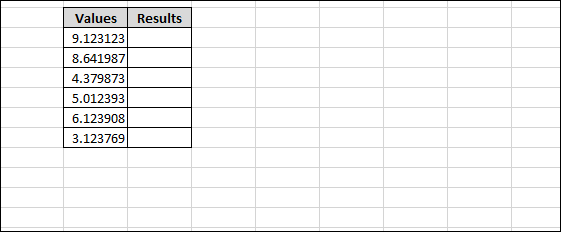
Step 1: Select the cell where you want your rounded result.
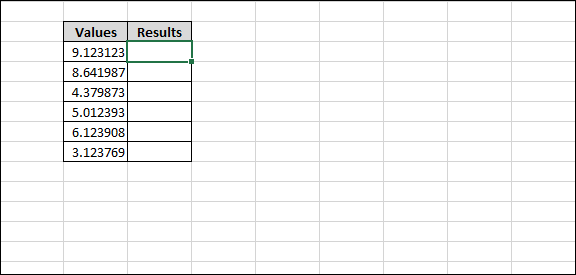
Step 2: On the top navigation bar of the window, click the “Formulas” tab.
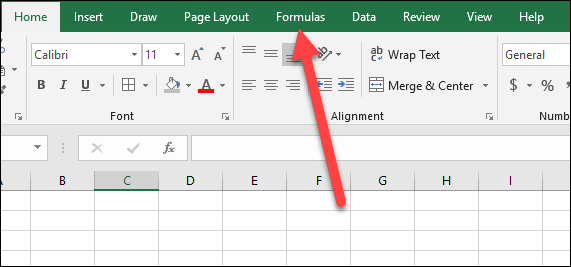
Step 3: After the Formulas tab opens, click “Math & Trig”.
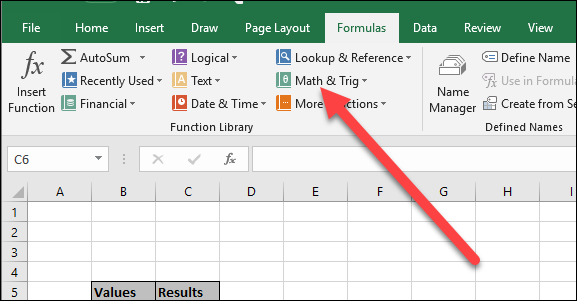
Step 4: On the “Math & Trig” drop-down menu, click the “ROUND” function.
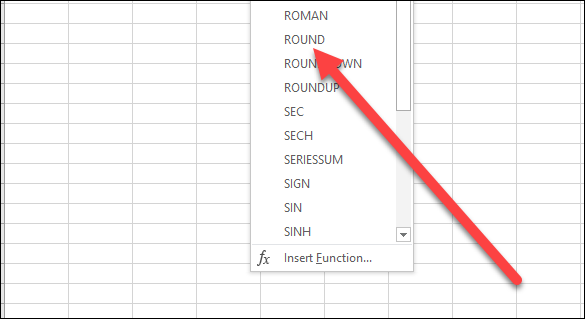
Step 5: A new window opens, inside are customizations for the ROUND function that you can change as you like.
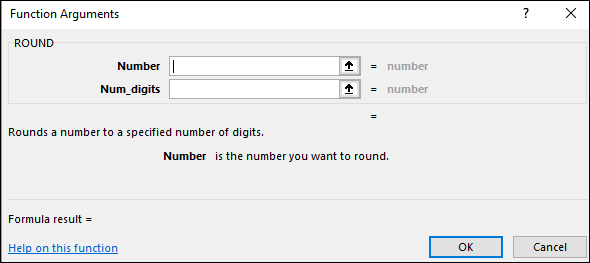
Step 6: Use the “Number” field for the number, cell, column, or row you want to round. You can round the number entered directly there, but normally we use Excel by calling a number from an existing cell in our worksheet. Here, we are using B6 as the top value of the “Values” column.

Step 7: Use the “Num_Digits” field to choose how many decimal places to round a number. Refer below:
- Use a positive integer (such as n) to round the number to the nth decimal place. For example, typing “3” will round to the third decimal place to the right of the dot .
- Enter “0” to round to the nearest whole number.
- Use a negative integer (such as -n) to round to the nth digit to the left of the dot. For example, if you round the number 328.25 and enter “-1” here, it will round your number to 330.
In our example, we’re entering “3” so it will round our result to the third digit to the right of the dot.
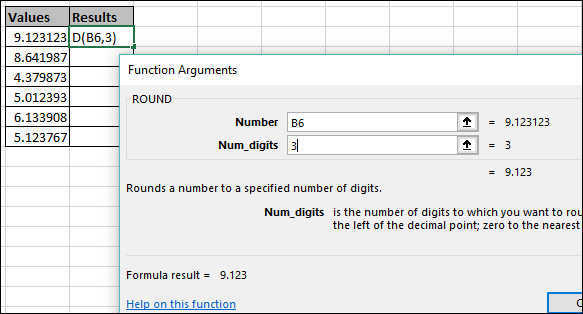
Step 8: Once done, click “OK” to finish.

As shown below, the rounding result of cell B6 has been rounded to the 3rd decimal place in the selected cell, here we select the top cell of the “Results” column.
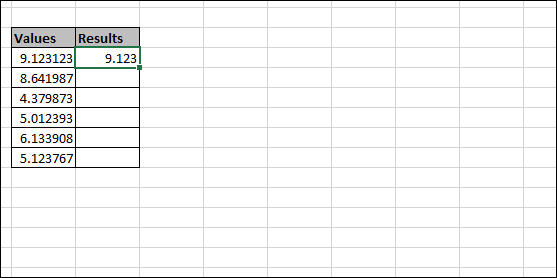
Step 9: You can use the formula of the ROUND function just entered for the cells below by clicking and holding the blue dot in the lower right corner of the cell to be copied, then dragging to the cell you want.
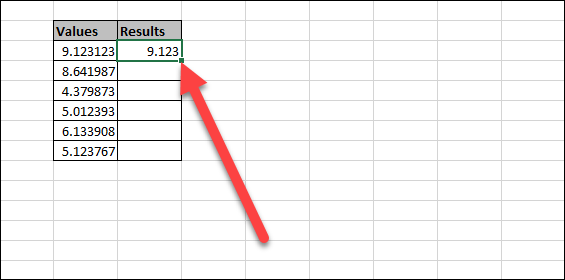
All cells that you select will change to the same value as the cell you selected after performing the above step. You can also copy the formula in the cell where you want to copy the formula and paste it to the cell where you want to use the same formula in Excel.

You can also do all this just using Excel’s Function bar if you want.
Step 1: Select the column where you want your rounded numbers to appear.
Step 2: Click the Function bar to enter the function you want on it.
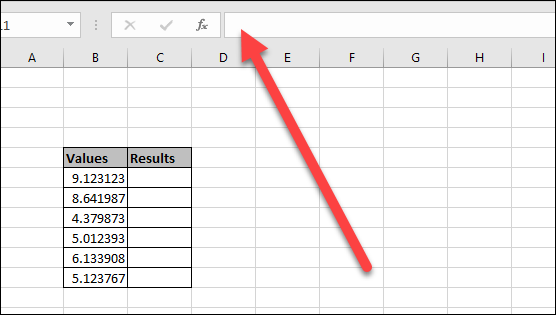
Step 4: Enter your formula using the syntax:
= ROUND (number, num_digits)
Where “number” is the cell or number you want to round and “num_digits” defines how many digits you want to round.
For example, this is how we enter the same rounding formula that we applied earlier using the dialog box.
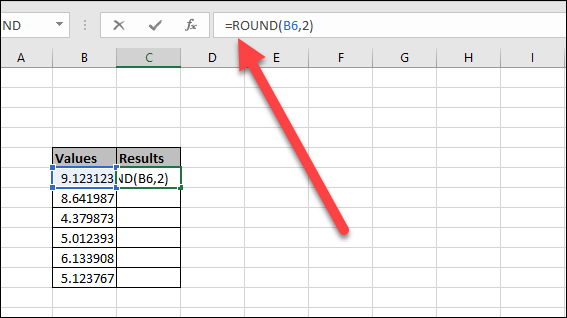
Press Enter (or Return) after entering your formula and your number is now rounded.
2. How to round an Excel number with the ROUNDUP or ROUNDDOWN . function
Sometimes you may want your numbers to just round up or down instead of depending on the next digit of the number you want to round. That’s what the ROUNDUP and ROUNDDOWN functions can do for you.
Click the cell where you want your rounded result.
Go Formulas > Math & Trigthen select the function “ROUNDUP” or “ROUNDDOWN” from the drop-down menu.

Enter the number (or cell) you want to round in the “” field.Number“. Enter how many digits you want to round into the “Num_digits” field. The same rules apply as with the ROUND function. A positive integer rounds to the right of the dot, a zero rounds to the nearest integer, and a negative integer rounds to the left of the dot.
Click “OK” when you have everything set up.
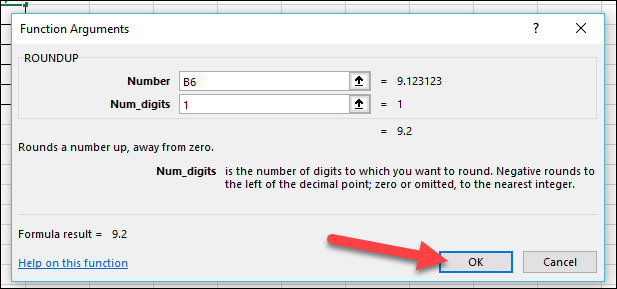
And just like with the ROUND function, you can also set up the ROUNDUP and ROUNDDOWN functions by typing them in the Function bar and you can use them as part of a more complex formula.
Above is how to use ROUND functions to round numbers in Excel. It’s simple, isn’t it, if you have any questions or comments about the article, please leave a comment for GhienCongList to help you answer. Thanks for following the above post.
Reference: howtogeek.com
Source: 3 ways to round Excel numbers with the ROUND function are very simple and easy to do
– TechtipsnReview






